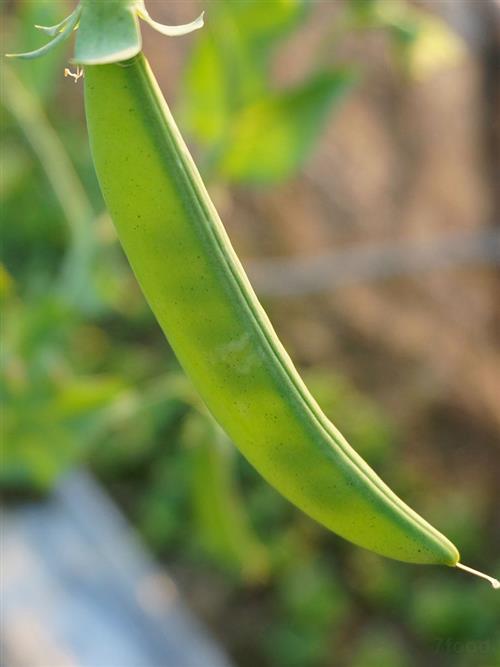The nutritional value of beans
The nutritional value of beans is very high. China's traditional diet emphasizes that “grains should be raised and beans lost are badâ€. This means that the grains are nutritious, but no beans will lose their balance. Modern nutrition also proves that if you insist on eating legumes every day, as long as two weeks, the body can reduce the fat content, increase immunity, and reduce the risk of disease. Therefore, many nutritionists have called for the use of legumes instead of a certain amount of animal foods such as meat, which is the best way to solve the dual burden of malnutrition and excess nutrition in urban areas.
Beans contain high protein content and good quality. Their nutritional value is close to animal protein and is the best vegetable protein.
The composition of amino acids is close to the needs of the human body and is a good source of protein in our people's diet. The fat contained in beans is the highest, up to 18%, and thus can be used as a raw material for edible oils. Other beans contain less fat. The sugar content of beans was higher in the range of broad beans, red beans, mung beans and peas, which ranged from 50% to 60%. The sugar content of soybeans was less, about 25%. Therefore, the heat supplied by beans is also quite high. The vitamins in B beans are the most common in legumes and are higher than those in cereals. In addition, it also contains a small amount of carotene. Beans are rich in calcium, phosphorus, iron, potassium, magnesium and other inorganic salts, is a rare high potassium, high magnesium, low sodium foods in the diet.
Next, let's take a look at the beans that are suitable for the summer.

Six kinds of legumes that must be eaten in summer
Soybean is the king of dietary fiber.
Soybean is rich in vegetable protein, potassium, magnesium and B vitamins are also particularly rich. What is worth mentioning is that Tender soybeans have a dietary fiber content of up to 4.0%, which is a fiber champion in vegetables and helps control blood sugar and blood lipids. In addition, eating soybeans in summer can also prevent malnutrition and heat stroke caused by excessive sweating and loss of appetite. Edamame can be cooked directly with skin, but also can be used to fry to eat, such as soybeans fried chicken.
Peas improve vision.
According to the "Chinese Food Composition Table," each 100 grams of peas contains 10.9 milligrams of vitamin B, which is three times that of soybeans. However, hot sweating may lose some of the B vitamins, so peas are suitable for summer consumption. Pea contains a lot of carotenoids and lutein, which is very helpful for protecting the optic nerve and improving vision. Fresh peas are on the market in spring and the dried peas they buy now can be used to cook porridge or to grind flour and make snacks.
Kidney beans are calcium supplement champions.
Per 100 g of skinned cowpeas contains 349 mg of calcium, nearly twice that of soybeans. Kidney beans are also rich in dietary fiber and have higher potassium levels than red beans. Therefore, eating cowpea in the summer can supplement minerals very well. Kidney beans can be cooked and used to make snacks, such as spiced kidney beans, can also be used to stew ribs, both to increase the fragrance and solution tired.
Broad bean brain.
Broad beans are rich in nutrients, rich in dietary fiber, calcium, potassium, carotene and other nutrients that are beneficial to health. It also contains phospholipids and choline rich in important components of the brain and nerve tissue, which have the effect of enhancing memory and brain. Broad beans are also good for qi, spleen, dampness, swelling, and other effects, especially for summer heat and moisture consumption in summer. The tender broad beans can be eaten directly and the old broad beans can be used for cooking and porridge.
Mung bean heat hot weather.
Studies have shown that mung bean skin contains a large number of antioxidant ingredients, such as flavonoids, tannins, saponins and so on. Mung beans also contain alkaloids, sterols, and a lot of dietary fiber. Therefore, eating green beans in the summer heat detoxification, relieve heat stroke. The common way to eat mung bean is to use porridge or soup, and it is also a good choice to make mung bean.
Red beans swelling and dehumidification.
From the perspective of Chinese medicine, red beans are flat, sweet and sour, with the benefits of spleen and water, heat and dehumidification, and swelling and detoxification. In the summer, the body is prone to edema, and eating red beans is a good way to reduce swelling. Modern research shows that red beans are rich in dietary fiber, potassium, B vitamins and other nutrients. Red beans can be mixed with rice to make red bean rice, and can also be used as fillings for staple foods, such as red beans.
Disposable Urethral Catheter Kit
Catheter Kit,Urethral Catheter Kit,Hemodialysis Catheter Kit,Disposable Urethral Catheter Kit
Henan Anbang Medical Supplies Co., Ltd. , https://www.anbangmedical.com